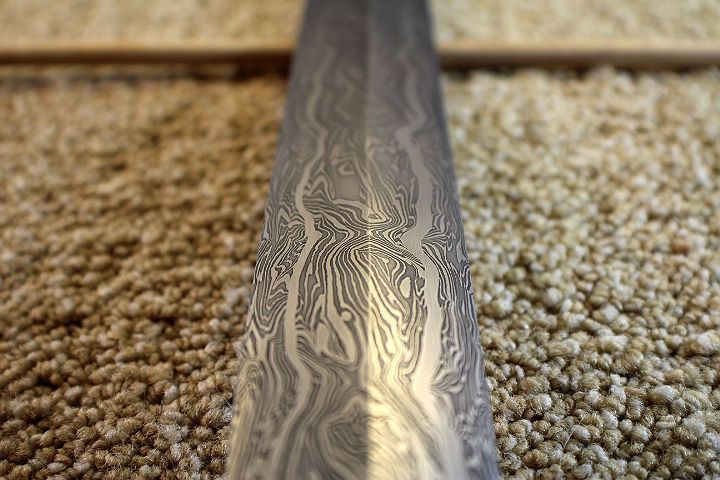You are using an out of date browser. It may not display this or other websites correctly.
You should upgrade or use an alternative browser.
You should upgrade or use an alternative browser.
question,s about a sen scraper ?
- Thread starter graveyard
- Start date
kevin - the professor
Well-Known Member
The easiest way (as opposed to the best way, which I don't actually know) to make a functioning sen (I borrowed liberally from Walter Sorrells and his videos to do this). Here it is:
1. take an old file.
2. grind the teeth off until it really is smooth.
3. be careful with heat, so you don't ruin the temper of the steel while grinding. You want this tool to be just as hard as the file was.
4. grind the bottom flat (what will be the bottom) smooth with a magnet holding it against the platen.
5. polish to about 400 grit on grinder.
6. cut between a 75-85 degree angle on what you want to be the leading cutting edge. You can flat grind it, convex, or concave. I have had best luck with full flat and hollow. Full flat is easiest. Turn the grinder way down, tip the file about 5-10 degrees off of exactly perpendicular to the platen (i.e., tilt the rest or the platen, it works better than grinding by hand).
7. polish the bevel on the machine with about 400 grit belt.
8. go to work... you will need to tilt the scraper just a little, and work with the angles until you find the one that works best. I also find that holding at a little diagonal across the work rather than perpendicular as I am scraping works better.
I used a sen I made in 3 minutes to do some scraping on this blade. The simple way I learned from Walter's vids is great because you can make and touch-up in almost no time.

1. take an old file.
2. grind the teeth off until it really is smooth.
3. be careful with heat, so you don't ruin the temper of the steel while grinding. You want this tool to be just as hard as the file was.
4. grind the bottom flat (what will be the bottom) smooth with a magnet holding it against the platen.
5. polish to about 400 grit on grinder.
6. cut between a 75-85 degree angle on what you want to be the leading cutting edge. You can flat grind it, convex, or concave. I have had best luck with full flat and hollow. Full flat is easiest. Turn the grinder way down, tip the file about 5-10 degrees off of exactly perpendicular to the platen (i.e., tilt the rest or the platen, it works better than grinding by hand).
7. polish the bevel on the machine with about 400 grit belt.
8. go to work... you will need to tilt the scraper just a little, and work with the angles until you find the one that works best. I also find that holding at a little diagonal across the work rather than perpendicular as I am scraping works better.
I used a sen I made in 3 minutes to do some scraping on this blade. The simple way I learned from Walter's vids is great because you can make and touch-up in almost no time.

Doug Lester
Well-Known Member
The only thing that I could add to Kevin's post is to be sure that you are not using a case hardened file or you would be grinding off the hard steel removing t he teeth and cutting the bevel. Reading the above process I would wonder if you could just start out with a bar of 1084 or 80CrV2 and grinding the same way, with the exception of not having to grind the teeth off. I'd then harden the bar and temper at about 350° to start with an try a few trial cuts. You could then move the temper up in 25° increments to get to an acceptable hardness. You could also try something like 1095, W1, or W2 but I wonder if the lack of hardenability might get into the way of stock 1/4" or a little thicker.
Doug
Doug
kevin - the professor
Well-Known Member
honestly, I think that using a flat bar of 80CrV2 would be a little simpler, except that you would then need to heat treat it.
Great idea.
I use files a lot, and I often use them to file blades that have been hardened and tempered. This wears out a lot of files. So, I tend to use worn out files as the basis for a lot of the tools I make for in-shop use.
If you don't want to use a file, the bar of 80CrV2 would make a tougher and therefore better, tool. Doug is right on.
kc
Great idea.
I use files a lot, and I often use them to file blades that have been hardened and tempered. This wears out a lot of files. So, I tend to use worn out files as the basis for a lot of the tools I make for in-shop use.
If you don't want to use a file, the bar of 80CrV2 would make a tougher and therefore better, tool. Doug is right on.
kc

